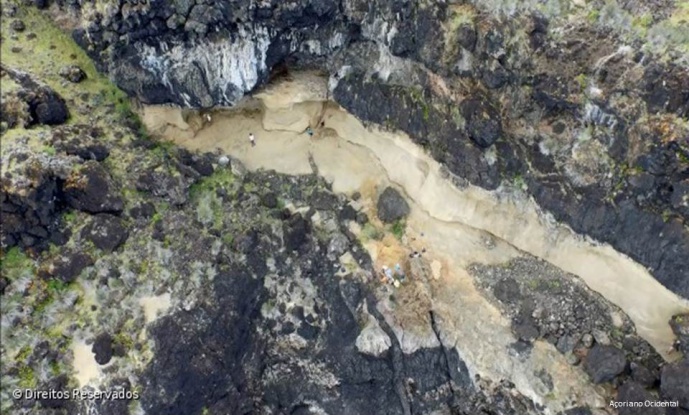HURRICANE DEPOSIT AT SANTA MARIA ISLAND IN THE SPOTLIGHT AT AÇORIANO ORIENTAL

Even though hurricanes are agents of coastal erosion through scouring of nearshore deposits, massive onshore transport of sediments by hurricanes appears to be a rare phenomenon (especially on volcanic oceanic islands with narrow platforms) and this requires exceptional conditions.
In an article published by the scientific journal Marine Geology, an international team which includes CIBIO-InBIO researcher Sérgio Ávila, described and interpreted the genesis of a singular, 5-m sandstone bed within a 20-m sedimentary succession at Malbusca, a fossiliferous outcrop located on the southern cliffs of Santa Maria Island (Azores archipelago).
This work, highlighted by the media outlet Açoriano Oriental, is the first to report the discovery of a major hurricane deposit that moved sand from an offshore bar in an onshore path. According to Sérgio Ávila, co-author of this study and leader of the research team, “even though storms are responsible for coastal erosion this is an extremely rare event that requires exceptional conditions. Also, this finding fits the context of the Pliocene Warm Period, during which global El Niño conditions were more intense than today.”
To know more about this topic, please follow the link:
“Gigantesca tempestade cria depósito fossilífero” | Açoriano Ocidental | March 13, 2017 (Information available in Portuguese)
To access the full article, please click here